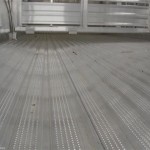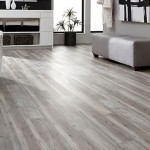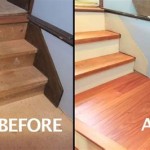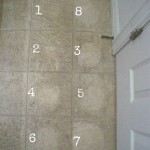Cut Nails and Hardwood Flooring: A Timeless Bond
Hardwood flooring has been a hallmark of enduring style and quality in homes for centuries. While modern installation methods often rely on staples, adhesives, or pneumatic nailers, there remains a compelling case for using cut nails. Cut nails, with their distinct shape and unique holding power, offer advantages that resonate with historical accuracy, durability, and aesthetic considerations. This article explores the use of cut nails in hardwood flooring, delving into their characteristics, benefits, installation techniques, and appropriate applications.
Cut nails, also known as square-cut nails or wrought nails, are manufactured by shearing individual nails from a sheet of metal, typically steel. This process creates a nail with a distinctive tapered shape, four distinct edges, and a blunt point. Unlike wire nails, which are drawn through a die, cut nails derive their holding power from the wedging action created by their shape. The grain of the wood is compressed and locked around the nail as it is driven in, resulting in a tight and exceptionally secure fastening.
The history of cut nails is deeply intertwined with the evolution of building practices. Before the mass production of wire nails, cut nails were the standard fastener. Their use dates back to ancient times, and they were particularly prevalent in the 18th and 19th centuries. Many historic homes and buildings still stand today, testament to the longevity and reliability of cut nails. Replicating historical accuracy is a key factor in choosing cut nails for restoration projects.
Superior Holding Power
The primary advantage of cut nails in hardwood flooring lies in their superior holding power. The tapered shape and blunt point of a cut nail contribute significantly to its ability to resist pulling out. When driven into wood, the nail fibers are pushed aside and compressed, creating a tight grip. This grip is far more robust than that of a wire nail, which relies primarily on friction. The wedging action of the cut nail also helps to prevent the wood from splitting, a common concern when using other types of fasteners, especially near the ends of boards.
The rectangular cross-section of a cut nail further enhances its holding power. Unlike the round profile of a wire nail, the flat surfaces of a cut nail provide more surface area for friction and create a stronger mechanical interlock with the wood fibers. This is particularly beneficial in hardwood flooring applications, where boards are subjected to constant wear and tear, expansion and contraction due to humidity changes, and the potential for movement.
In situations where floors are subjected to heavy traffic or unusual stress, the holding power of cut nails becomes especially critical. They provide a level of security that other fasteners may simply not be able to match. For example, in commercial spaces or homes with large families and active lifestyles, cut nails can help ensure that the flooring remains firmly in place for years to come.
Aesthetic Considerations and Historical Accuracy
Beyond their functional benefits, cut nails also offer a distinct aesthetic appeal. Their unique appearance evokes a sense of tradition and quality craftsmanship. In restoration projects, using cut nails is crucial for maintaining historical accuracy. Reproducing the materials and methods used in the original construction is paramount to preserving the integrity of historical buildings.
Even in new construction, cut nails can add a touch of character and authenticity to hardwood floors. While they may not be immediately visible once the floor is installed, the knowledge that they are there contributes to the overall sense of quality and attention to detail. They resonate with a commitment to traditional building practices and a desire to create a space that feels both timeless and well-crafted.
The appearance of the nail head can also be a design element. Cut nails are available with various head styles, including rose heads, countersunk heads, and clinch heads. The choice of head style can influence the overall look of the floor and contribute to the desired aesthetic. Flush-set heads create a smooth, seamless surface, while exposed heads can add a rustic or industrial touch.
Proper Installation Techniques
While the benefits of cut nails are undeniable, their effectiveness hinges on proper installation. Unlike modern pneumatic nailers, cut nails typically require manual installation, which demands a certain level of skill and care. Incorrect installation can lead to split boards, bent nails, and a compromised finished product.
The first step in proper installation is to select the correct size and type of nail for the specific application. The nail length should be sufficient to penetrate deeply into the subfloor while also providing adequate holding power in the hardwood flooring. The nail gauge (thickness) should be appropriate for the hardness of the wood and the desired level of fastening strength. Using too small a nail will result in inadequate holding power, while using too large a nail can increase the risk of splitting the wood.
Pre-drilling pilot holes is highly recommended, especially when working with dense hardwoods. Pilot holes help to prevent the wood from splitting and make it easier to drive the nails straight. The diameter of the pilot hole should be slightly smaller than the diameter of the nail shank. Using a drill bit that is too large will reduce the holding power of the nail, while using a drill bit that is too small will make it difficult to drive the nail.
When driving the nails, it is important to use a hammer with a smooth face and to strike the nail squarely. Avoid striking the nail at an angle, as this can cause it to bend or break. Use a nail set to countersink the nail head slightly below the surface of the wood. This will prevent the nail head from interfering with the finish and create a smoother, more uniform appearance. Take care not to damage the surrounding wood when using the nail set.
The direction of the wood grain is also a crucial consideration during installation. Drive the nails parallel to the grain whenever possible to minimize the risk of splitting. When nailing near the ends of boards, it is essential to use extra care and to pre-drill pilot holes to prevent splitting. Staggering the nail pattern can also help to distribute the stress and reduce the likelihood of splitting.
For those unaccustomed to hand-nailing, practice on scrap wood is essential. Mastery of the technique ensures consistent, aesthetically pleasing, and structurally sound results. Consideration should be given to nail placement along board edges. Consistent spacing provides both structural integrity and a visually appealing aesthetic to the finished floor.
Alternative methods of installation beyond hand-nailing do exist, albeit with specialized equipment. Pneumatic nailers designed specifically for cut nails can significantly speed up the installation process while still delivering the benefits of cut-nail fastening. These nailers typically use a magazine-fed system to automatically load and drive the nails, reducing the amount of manual labor required. However, it is important to choose a nailer that is designed for use with cut nails and to follow the manufacturer's instructions carefully. Using a nailer that is not designed for cut nails can damage the nails and lead to improper installation.
The subfloor's condition is also a pivotal aspect of installation. A level, solid subfloor is required for any type of flooring installation, but it is especially essential when using cut nails. Uneven or unstable subfloors can cause the nails to loosen over time, leading to squeaks and movement in the flooring. Before installation, ensure that the subfloor is properly prepared by leveling any uneven areas, repairing any damage, and ensuring that it is free from moisture.
Moisture control is paramount when installing any hardwood floor, and this is especially true when using cut nails. Hardwood is a hygroscopic material, meaning that it absorbs and releases moisture depending on the humidity levels in the surrounding environment. Excessive moisture can cause the wood to expand, leading to cupping, buckling, and other problems. Before installation, ensure that the hardwood flooring has been properly acclimated to the environment in which it will be installed. This involves storing the flooring in the room for several days or weeks to allow it to adjust to the temperature and humidity levels.
In summary, while requiring more skill and precision than modern nailing techniques, the effort invested in proper cut nail installation translates to a hardwood floor with exceptional holding power, a unique aesthetic, and a connection to historical building traditions.

Cut Nails Best Square 2024

Grip Rite 2 In 6 Penny Steel Cut Masonry Flooring Nails 1 Lb Pack 6cutflr1 The Home Depot

Cut Nails Best Square 2024

Eastern White Pine With Antique Cut Nails Traditional Entrance New York By Heritage Wide Plank Flooring Millwork Houzz

How To Face Nail Wide Plank Wood Flooring Projects

Wide Plank Pine Flooring Top Nailed With Cut Nails

Inside Dogs And Hardwood Floors

The History And Merits Of Square Nails

Cleat Nails Vs Staples An Overview Hardwood Floors

Pine Hard How To Install Wide Flooring Angie S Roost
Related Posts








